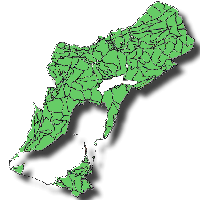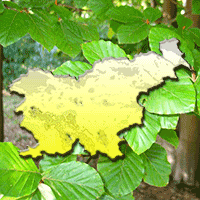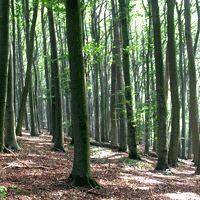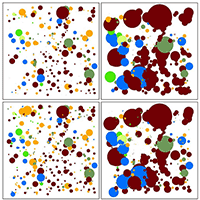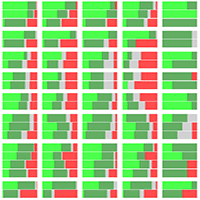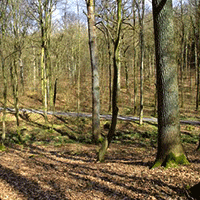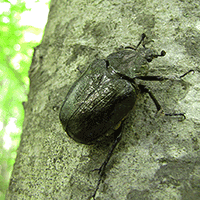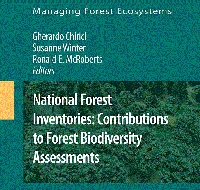
Integrating conservation objectives into forest management: coppice management and forest habitats in Natura 2000 sites
Paola Mairota (1) , Peter Buckley (2), Christian Suchomel (3), Katrin Heinsoo (4), Kris Verheyen (5), Radim Hédl (6-7), Pier Giorgio Terzuolo (8), Roberto Sindaco (8), Anna Carpanelli (9)
iForest - Biogeosciences and Forestry, Volume 9, Issue 4, Pages 560-568 (2016)
doi: https://doi.org/10.3832/ifor1867-009
Published: May 12, 2016 - Copyright © 2016 SISEF
Research Articles
Collection/Special Issue: IUFRO division 8.02 - Mendel University Brno (Czech Republic) 2015
Coppice forests: past, present and future
Guest Editors: Tomas Vrska, Renzo Motta, Alex Mosseler
Abstract
Most forest habitats, as defined and listed for their nature conservation importance in the Habitats Directive of the European Union and in the Bern Convention, result from centuries of human intervention. This paper explores the scope for, and the attitudes towards coppicing in Natura 2000 sites in some of the EU28 countries where coppice was historically one of the most important traditional silvicultural systems. A questionnaire survey was circulated to experts involved with Natura 2000 sites and case studies were conducted in Belgium, the Czech Republic, Estonia, Germany, Italy and the United Kingdom, to investigate attitudes to coppice silviculture within the framework of Natura 2000 site management plans. A list of forest habitat types capable of being managed as coppices was compiled and populated with sites at national and regional levels. At the regional level, management plans for the relevant forest habitat types in Natura 2000 sites were critically scrutinised together with other statutory, administrative or contractual measures. The results show that approaches to integrate coppice management into conservation plans differ widely. Examples of disparities are given and the possible causes discussed. A case is made for coppicing to be continued, where appropriate, as an important strategy in site management plans that aim to conserve habitats and improve forest biodiversity.
Keywords
Habitats Directive, Natura 2000, Forest Habitat Types, Coppice, Biodiversity, Landscape
Authors’ Info
Authors’ address
Department of Agro-Environmental and Territorial Sciences, University of Bari “Aldo Moro”, v. Orabona 4, I-70125 Bari (Italy)
Peter Buckley Associates, 8 Long Row, Mersham, Ashford, Kent TN25 7HD (UK)
Chair of Landscape Management, University of Freiburg, Tennenbacher Str. 4, 79106 Freiburg (Germany)
Institute of Agricultural and Environmental Sciences, Estonian University of Life Sciences Kreutzwaldi 5, Tartu 51014 (Estonia)
Forest & Nature Lab, Ghent University, Geraardsbergsesteenweg 267, 9090 Melle-Gontrode (Belgium)
Department of Vegetation Ecology, Institute of Botany, Czech Academy of Sciences, Lidická 25/27, 60200 Brno (Czech Republic)
Department of Botany, Faculty of Science, Palacký University, Šlechtitelu 27, 78371 Olomouc (Czech Republic)
Roberto Sindaco
Istituto per le Piante da Legno e l’Ambiente (IPLA SpA), C.so Casale 476, 10132 Torino (Italy)
Regione Autonoma Friuli Venezia Giulia, Servizio tutela del paesaggio e biodiversità, v. Sabbadini 31, I-33100 Udine (Italy)
Corresponding author
Paper Info
Citation
Mairota P, Buckley P, Suchomel C, Heinsoo K, Verheyen K, Hédl R, Terzuolo PG, Sindaco R, Carpanelli A (2016). Integrating conservation objectives into forest management: coppice management and forest habitats in Natura 2000 sites. iForest 9: 560-568. - doi: 10.3832/ifor1867-009
Academic Editor
Tomas Vrska
Paper history
Received: Sep 08, 2015
Accepted: Mar 21, 2016
First online: May 12, 2016
Publication Date: Aug 09, 2016
Publication Time: 1.73 months
Copyright Information
© SISEF - The Italian Society of Silviculture and Forest Ecology 2016
Open Access
This article is distributed under the terms of the Creative Commons Attribution-Non Commercial 4.0 International (https://creativecommons.org/licenses/by-nc/4.0/), which permits unrestricted use, distribution, and reproduction in any medium, provided you give appropriate credit to the original author(s) and the source, provide a link to the Creative Commons license, and indicate if changes were made.
Web Metrics
Breakdown by View Type
Article Usage
Total Article Views: 54070
(from publication date up to now)
Breakdown by View Type
HTML Page Views: 44827
Abstract Page Views: 3430
PDF Downloads: 4370
Citation/Reference Downloads: 49
XML Downloads: 1394
Web Metrics
Days since publication: 3503
Overall contacts: 54070
Avg. contacts per week: 108.05
Citation Metrics
Article Citations
Article citations are based on data periodically collected from the Clarivate Web of Science web site
(last update: Mar 2025)
Total number of cites (since 2016): 16
Average cites per year: 1.60
Publication Metrics
by Dimensions ©
Articles citing this article
List of the papers citing this article based on CrossRef Cited-by.
References
Pattern and process in a forested ecosystem. Springer, New York, USA, pp. 253.
Gscholar
Managing Natura 2000 sites. The provisions of Article 6 of the Habitats Directive 92/43/EEC, Office for Official Publications of the European Communities, Luxembourg, pp. 69.
Gscholar
Natura 2000 and forests “Challenges and opportunities” Interpretation guide. Office for Official Publications of the European Communities, Luxembourg, pp. 101.
Gscholar
Guidelines on wilderness in Natura 2000. Technical Report 2013/069, Office for Official Publications of the European Communities, Luxembourg, pp. 98.
Gscholar
Interpretation manual of European Union habitats, version EUR 28. European Commission, DG Environment, Bruxelles, Belgium, pp. 146.
Gscholar
Regions in the European Union - Nomenclature of territorial units for statistics - NUTS 2013/EU28. Publications Office of the European Union, Luxembourg, pp. 140.
Gscholar
State of Nature in the EU. Results from reporting under the nature directives 2007-2012. Technical Report 2/2015, Publications Office of the European Union, Luxembourg, pp 178.
Gscholar
Disturbances and structural development of natural forest ecosystems with silvicultural implications, using Douglas-fir forests as an example. Forest Ecology and Management 155: 399-423.
CrossRef | Gscholar
Scales and diversity responses to management in Beech coppices of central Apennines (Marche, Italy): from floristic relevés to functional groups. Braun-Blanquetia 46: 271-278.
Gscholar
Introduction à la gestion forestière en Ombrie et présentation des activitées de la Région Ombrie dans le project RECOFORME [Introduction to forest management in Umbria and presentation of the activities of the Umbria Region within the framework of the RECOFORME Project]. Association Internationale Forêts Méditerranéennes, Cahier de site 5, Marseille, France, pp. 20-22. [in French]
Gscholar
La matricinatura per gruppi. L’esperienza del progetto SUMMACOP [Group of standard retention. Experiences from the SUMMACOP Project]. Sherwood - Foreste e alberi oggi 80: 25-32. [in Italian]
Gscholar
Inventario Nazionale delle Foreste e dei Serbatoi Forestali di Carbonio [National Inventory of Forests and of Forest Carbon Pools]. Ministero delle Politiche Agricole Alimentari e Forestali, Ispettorato Generale - Corpo Forestale dello Stato. Consiglio per la Ricerca e Sperimentazione in Agricoltura Unità di ricerca per il Monitoraggio e la Pianificazione Forestale (CRA-MPF). [in Italian]
Online | Gscholar
Gestione del bosco e conservazione della biodiversità: l’analisi eco-paesistica applicata a territori boscati della Toscana meridionale [Forest management and biodiversity conservation: landscape ecological analysis of wooded lands in southern Tuscany (Italy)]. In: “Selvicoltura sostenibile nei boschi cedui” [Sustainable silviculture in coppice woodlands] (Fabbio G ed). Annali CRA Istituto Sperimentale per la Selvicoltura 33: 187-230. [in Italian]
Gscholar
Il governo misto [Mixed management]. Sherwood - Foreste e alberi oggi 211: 5-9. [in Italian]
Gscholar
Selvicoltura generale. Boschi, società e tecniche colturali [Silviculture. Forests, societies, and coltural techniques]. Compagnia delle Foreste, Arezzo, Italy, pp. 432. [in Italian]
Gscholar
Status of rare woodland plants and lichens. Plantlife, Salisbury, UK pp. 1-70.
Gscholar
The implementation of Natura 2000 in forests: a trans-and interdisciplinary assessment of challenges and choices. Environmental Science and Policy 52: 23-32.
CrossRef | Gscholar

